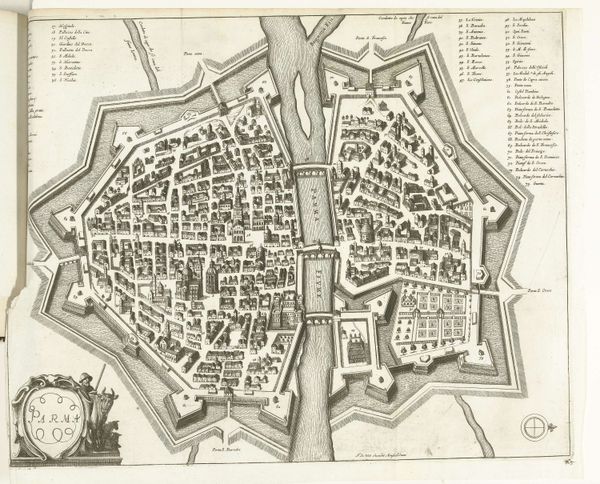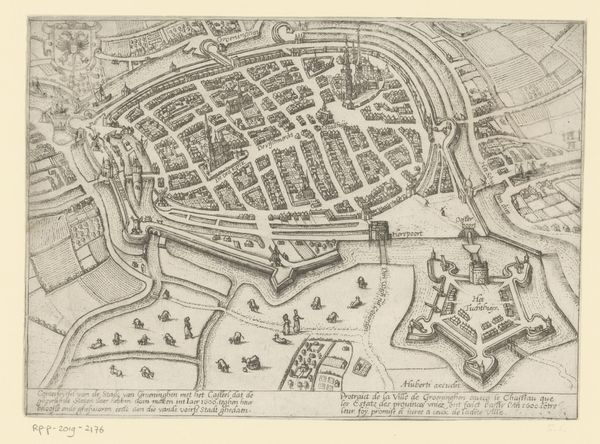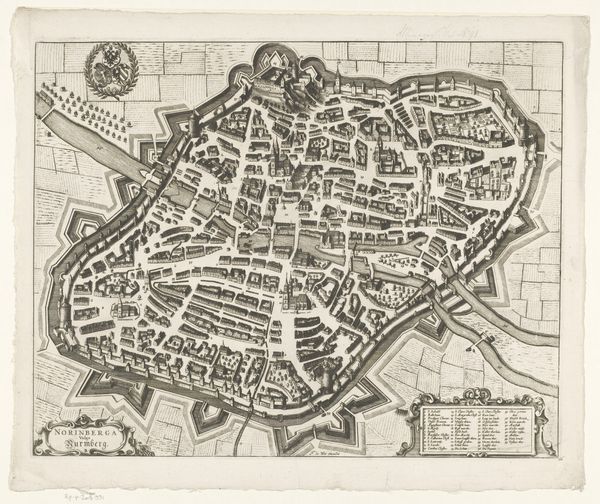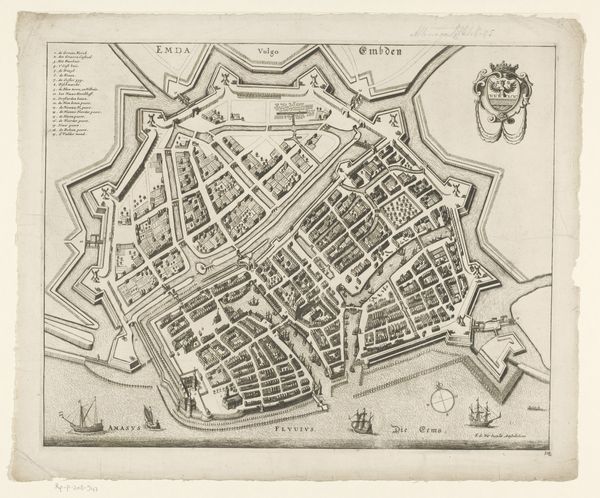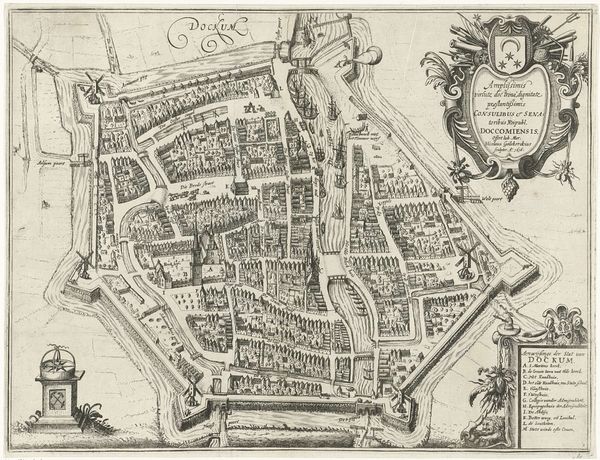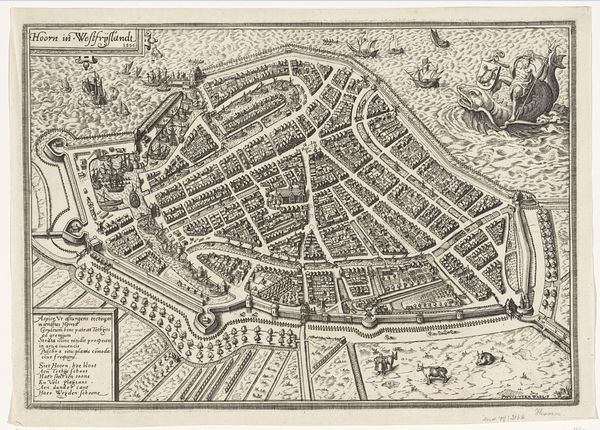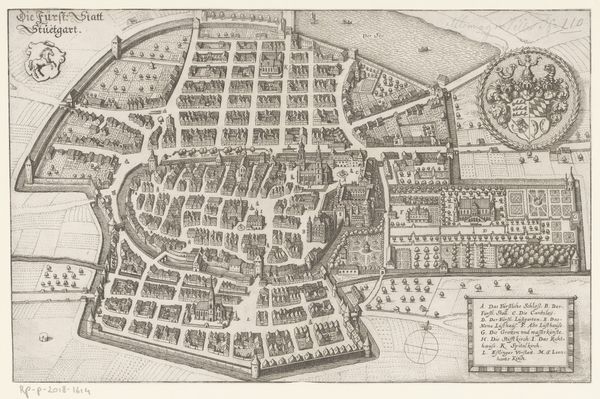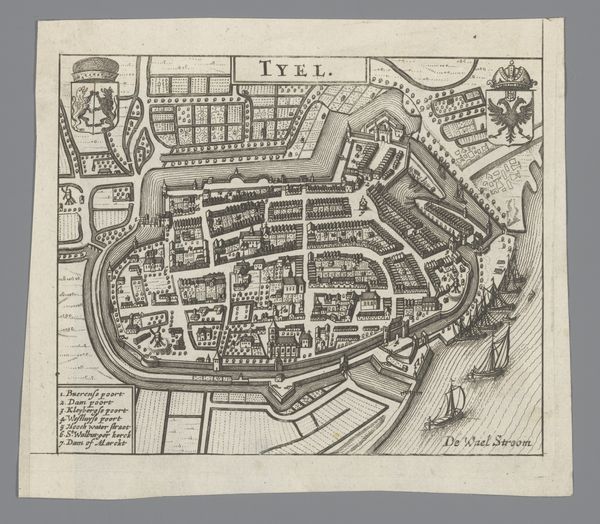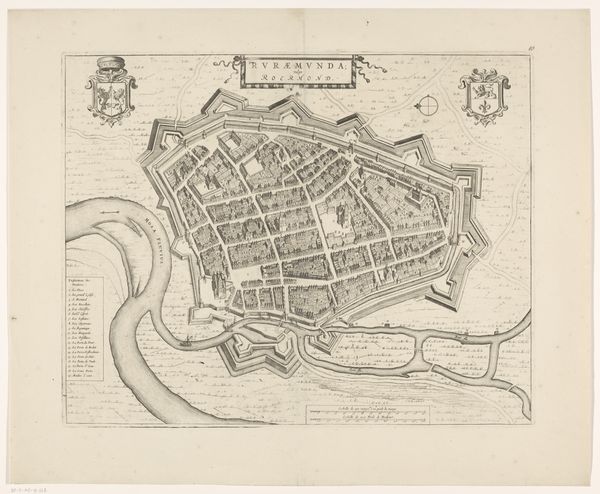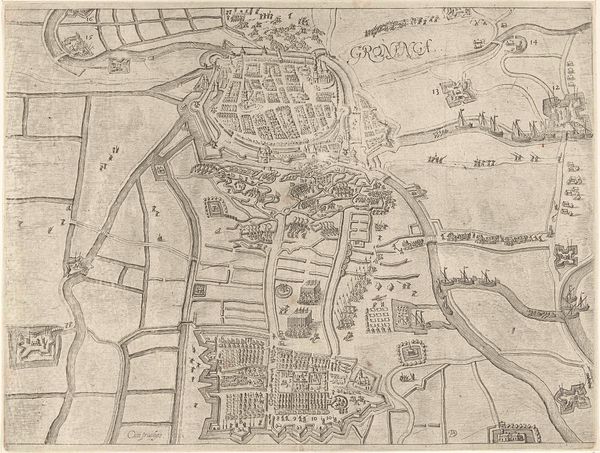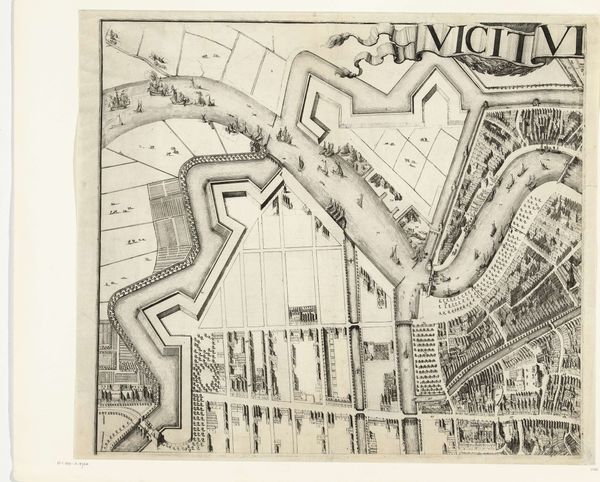
drawing, print, engraving
#
drawing
#
pen drawing
#
neat line work
#
dutch-golden-age
#
mechanical pen drawing
# print
#
pen sketch
#
old engraving style
#
ink line art
#
linework heavy
#
pen-ink sketch
#
thin linework
#
pen work
#
cityscape
#
engraving
Dimensions: height 410 mm, width 507 mm
Copyright: Rijks Museum: Open Domain
Editor: This is "Plattegrond van de stad Leeuwarden," made in 1622 by Pieter Feddes van Harlingen. It's a meticulously detailed engraving of the city. It really emphasizes the organized infrastructure of the time. What elements stand out to you the most when you view this print? Curator: Immediately, I see a representation not just of a city, but of labor, of intense resource management. Consider the materials: the paper, the ink, the metal plate that enabled the printmaking. The engraving process itself involved specialized skills, a kind of industrial practice. Each line represents labor, control, and a calculated transformation of resources into a commodity—an image. Editor: A commodity, that’s an interesting perspective. How does the cityscape depicted fit into that material analysis? Curator: Well, cities, particularly walled ones like this, are monumental investments of labor and materials. Look at the fortifications – bastions meticulously rendered. These are not just aesthetic choices; they represent defense infrastructure, demanding immense resources in labor, stone, and ultimately shaping the urban experience and social relations within. This plan flattens the three-dimensional experience of living within a dense space into a carefully controlled two-dimensional product. Editor: So, seeing this as a commodity challenges the idea that art exists in a realm separate from everyday concerns? Curator: Exactly. This plan helped administer the city, facilitating trade, taxation and control, illustrating consumption of space, and it speaks volumes about the practical, material needs that shaped its creation and its use. Even the ‘art’ of mapmaking, as we might call it today, is thoroughly intertwined with political and economic imperatives. Editor: I never considered the intense resources needed for just existing in a city during that era; thanks for your illuminating perspective. Curator: My pleasure. I hope that helps provide an entry point into thinking about art and urban design from the viewpoint of material production, not just aesthetic consumption.
Comments
No comments
Be the first to comment and join the conversation on the ultimate creative platform.
